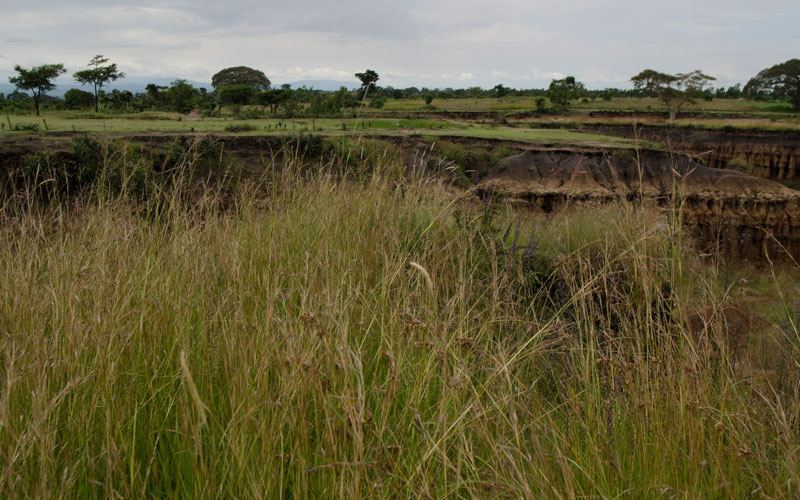When the grass grows greener on this side of the hill
 Tall grasses in a preserve stand in sharp contrast to unprotected pasture across a gulch in the Siraro district of Ethiopia. Photo by Eva-Lotta Jansson/Oxfam America
Tall grasses in a preserve stand in sharp contrast to unprotected pasture across a gulch in the Siraro district of Ethiopia. Photo by Eva-Lotta Jansson/Oxfam America
The place looked familiar—the small building with mud walls under a big sky. But this time, three years later, a sea of tall grasses swallowed the now-empty structure, their stalks glistening with the rain that had fallen the night before.
We were in the village of Ilancho in the Siraro district of Ethiopia’s West Arsi Zone where erosion has carried off a great deal of the precious topsoil leaving gaping rifts between fields and homes. When I first visited this spot in 2010, the earth here was packed hard. What grass there was grew in stubby patches nibbled to the ground by the cattle and goats people depend on for food and income. At the time, we met an elderly man, Ganute Kampiso, who remembered the landscape of Ilancho from his youth, when trees crowded the hills and the pastures were lush—so different from the Ilancho of today except for a few places, like here, where a transformation has begun to take place.
Three years ago a cash for work program carried out by Oxfam America and its local partner, the Center for Development Initiatives, had engaged villagers in a land restoration project in Ilancho. It had included planting trees, digging trenches to slow the flow of run-off in the gulches, and closing degraded areas to give them a chance to recover.
Today, in a 12.5-hectare stretch of gorgeous grasses, that spirit of preservation is thriving, and proving what’s possible with a little bit of patience. The local government has set aside this small chunk, said CDI’s Tamrat Belay. By day, a guard makes sure it’s left untouched and by night, sticks topped with the dung of hyenas and planted strategically along the narrow paths keep intruders—two-legged and four—out.
The dung is a warning: Villagers believe that if the grass is disturbed, hyenas will come in the night and eat their animals.

The result of all this effort is a plain of grasses, chest high in some places, dancing as the wind slips through.
“Before the intervention, everything was empty. It was stony an unusable land,” Roba Beriso told us. “Everyone who passes by is really astonished to see these great changes.”
In an arrangement with the government, a local youth group is now managing this bit of land and for them it has become a place of possibility—providing a source of income to feed their own plans. Marking off areas for cutting, they sell the grass to buyers who use it as feed for their animals or thatch for the roofs of their homes. Last year, the youths made 5,000 birr on the grass.
The proceeds, said youth group member Abera Dube, will be used to refurbish the mud-walled building now hidden by grass and to develop programs to benefit young people in Ilancho.
Walking through the grass that day, I felt a keen delight in the wet stalks slapping at our legs and soaking our pants. At the edge of the preserve the tall grasses stood in sharp contrast—a challenge almost—to the stubble that stretched toward the gulches beyond.
Though it’s a pilot project, its goal is to inspire others like it around this earth-worn district, said Belay. And it already has: Beriso invited us back to his home to see the preserve he has started on a quarter hectare of land. There the grass was growing green and long—a superior feast for the cows for which it was destined.